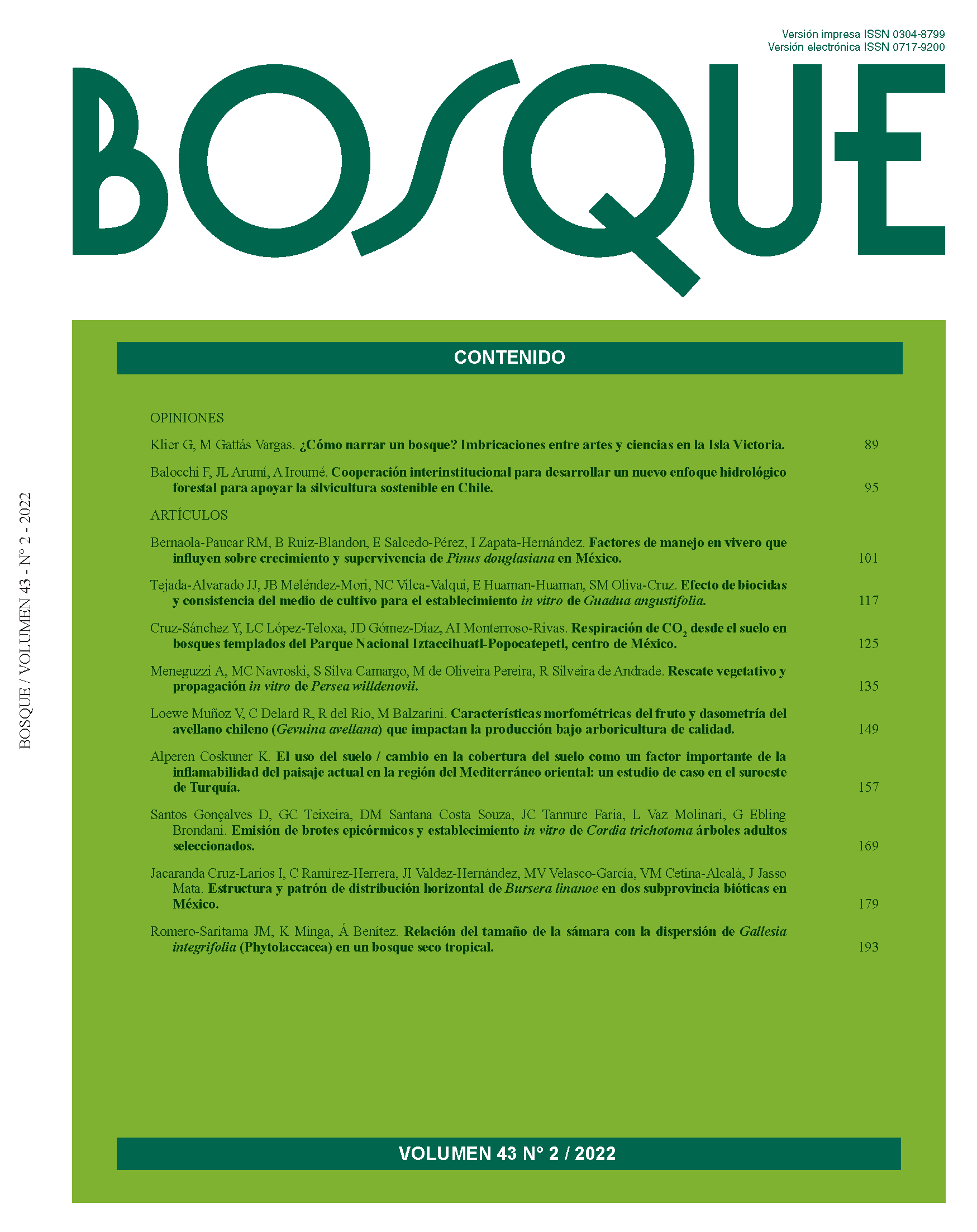Structure and pattern of horizontal distribution of Bursera linanoe in two biotic subprovinces in Mexico
Main Article Content
Abstract
The fruits of linaloe (Bursera linanoe) are collected to extract an aromatic oil and trees are cut to make crafts in the tropical region of Mexico. Structural values of natural populations are unknown, therefore the objectives of this study were to evaluate the population structure and to assess their horizontal distribution. In two biotic subprovinces twenty-four sampling units were established; in each subprovince two altitudinal ranges were determined. In each sample unit, dasometric variables were measured and density, crown area, index of structural value (IVE), indexes of Morisita (Is) and Ripley (L(t)) were calculated. In Balsasana on range < 900 m a.s.l. the density and height of non-reproductive individuals were 560 individual ha-1 and 0.103 m, in > 900 m a.s.l. were 300 individuals ha-1 and 1.212 m. In the subprovince Cañadiana range < 900 m a.s.l., it was 33 individual ha-1 and 0.213 m, while in the range > 900 m a.s.l. it was 260 individual ha-1 and 0.755 m in the lowest range. We recorded 313 reproductive individual ha-1, with 6.59 m of height, 0.247 m diameter and 205 m2 ha-1 crown area, while in the range > 900 m a.s.l., 320 individual ha-1 were recorded with 3.44 m, 0.061 m and 52 m2 ha-1 respectively. Based on Is = 69.56 % and L(t) = 62.50 %, the common horizontal distribution pattern was aggregated. The aggregate pattern dominates in Balsasana subprovince while the random pattern is present in the Cañadiana subprovince.

